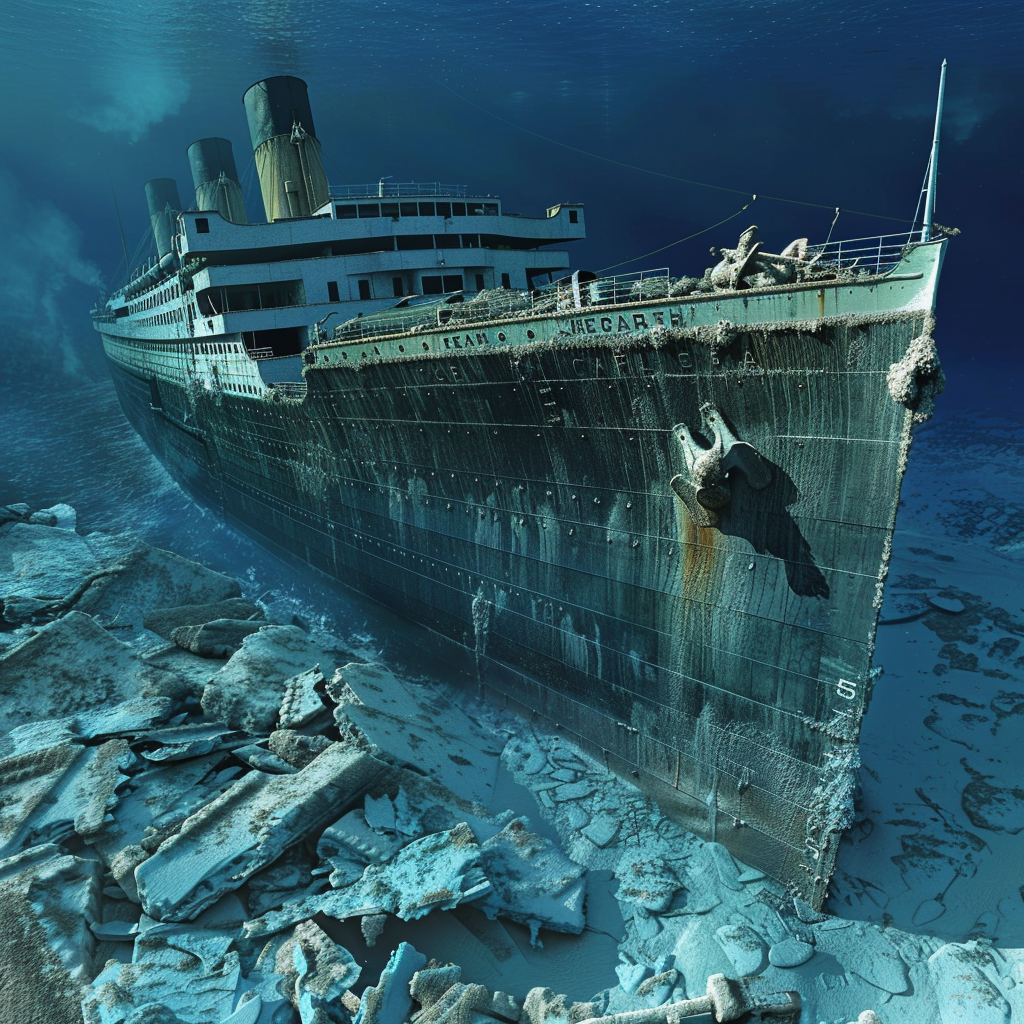The reason the Titanic sank after colliding with a glacier is closely related to buoyancy, the principle that keeps ships afloat. When the ship’s buoyancy became less than the force of gravity, it lost its equilibrium and sank.
What do you think of when you hear the word Titanic? Many people think of the tragic love story of the two main characters. However, in the world of shipbuilding, the Titanic is remembered as the worst maritime disaster in which a passenger ship collided with an iceberg, resulting in the loss of many lives. It was such a high-profile incident that it led to increased safety regulations for passenger ships. But how did such a sturdily built ship, one that floated so well on the water, sink simply because it hit a glacier? This question can be answered by understanding how ships float on water. Before we get into why the Titanic sank, let’s explain why ships float.
What does it mean for an object to float on water? It means that the sum of the forces acting on the object is zero, which is a state of force equilibrium. The Naver Encyclopedia defines the equilibrium state of force as “The state in which a force is acting on an object, and moreover, the object continues to remain at rest is called the equilibrium state of force.” You might recognize that in addition to the weight of that heavy plate ship, there is another force that offsets it. In physics, this is called buoyancy. An object immersed in a fluid, such as water or air, receives a force from the fluid in the opposite direction of gravity, and this force is called buoyancy. In other words, the boat floats because it is in equilibrium with the force of gravity, which is the weight of the boat itself, and the force of buoyancy, which is the force created by the boat floating on the water.
So why does a sheet of steel sink, but a boat made of the same weight of steel doesn’t? The concept we need here is the magnitude of buoyancy. To help you understand the magnitude of buoyancy, you can think of Archimedes’ famous bathhouse anecdote. Archimedes entered the bath, watched the water being pushed out, and realized that the weight of the water being pushed out was the amount of buoyancy. This is how he was able to identify if the crown was made of real gold. In this story, the weight of water is the product of its volume and its density. The volume is the amount of fluid that the object, the iron plate or the ship, is immersed in, and the density is how dense the fluid is that is being pushed by the iron plate or the ship. From this, we can see that the magnitude of buoyancy is proportional to the volume and density. In the case of a simple iron plate, the weight of the plate itself and the density of the water are constant, but the volume is small, so it sinks. In the case of a ship, the weight is the same as that of a simple iron plate and the density of the water is the same, but the volume is large, so gravity and buoyancy balance the force and it can float. In other words, because the ship has a large submerged volume, its buoyancy is relatively larger than that of a simple iron plate, so it can float.

In the previous lesson, we learned how a ship can float on water. Now we’ll explain why the Titanic, which was floating well, sank when it hit a glacier. We explained earlier that the magnitude of buoyancy is proportional to the volume submerged in water. To be more specific, the submerged volume is the closed volume that is submerged. Closed means that water cannot enter the interior of an object because there are no holes or gaps on the sides that are in contact with the water. In other words, water must not be able to enter the interior of a ship in order for the ship to be buoyant. When the Titanic collided with the glacier, a hole was punched in the front left side of the ship, and as water entered the hole, it lost some of its closed volume. This reduced the magnitude of buoyancy, and as buoyancy became less than the force of gravity, the equilibrium of forces was lost, causing the ship to sink.
The sinking of the Titanic taught us about buoyancy. To recap, buoyancy is the force that balances the force of gravity on a ship and keeps it afloat. Its magnitude is equal to the weight of the water, and the weight of the water is proportional to the volume in which the object is immersed and the density of the water. In this case, the volume in which an object is submerged is a closed space with no openings for water to enter. The sinking of the Titanic was such a shock to the shipbuilding industry that the world created a regulation called SOLAS to reduce the amount of submerged volume that a ship would lose if it collided with a glacier. It’s a global effort to ensure that nothing like the Titanic sinking ever happens again.
More than just a love story, the tragedy of the Titanic remains a reminder of the importance of scientific principles and technology. It teaches us that we need to understand the scientific concepts related to the buoyancy of objects and work towards safer maritime transportation.
 I’m a blog writer. I want to write articles that touch people’s hearts. I love Coca-Cola, coffee, reading and traveling. I hope you find happiness through my writing.
I’m a blog writer. I want to write articles that touch people’s hearts. I love Coca-Cola, coffee, reading and traveling. I hope you find happiness through my writing.